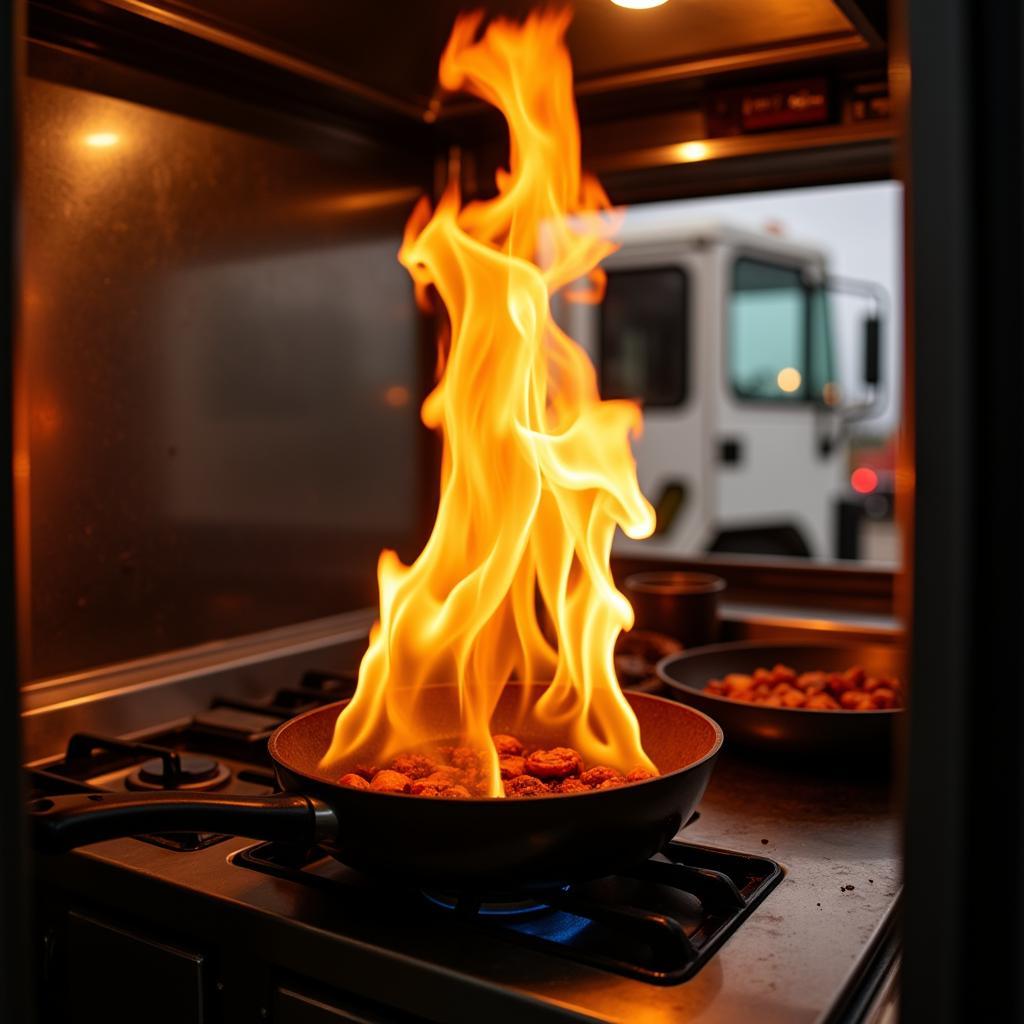A reliable fire suppression system is non-negotiable for any food truck owner. It’s not just about protecting your livelihood; it’s about ensuring the safety of you, your staff, and your customers. But with so many options on the market, understanding suppression systems for food trucks can feel overwhelming. This comprehensive guide will break down everything you need to know, from the different types of systems to installation and maintenance.
Why are Suppression Systems Crucial for Food Trucks?
The close quarters, presence of cooking oils, and high-heat cooking methods common in food trucks create a unique fire risk. A small grease fire can quickly escalate, putting lives and businesses at risk. This is where a properly installed and maintained suppression system makes all the difference.
 Food Truck Kitchen Fire
Food Truck Kitchen Fire
Types of Suppression Systems for Food Trucks
Choosing the right suppression system for your food truck depends on its size, cooking equipment, and local regulations.
1. Wet Chemical Systems: These systems are the most common for food trucks. They use a potassium-based solution that effectively cools down grease fires and prevents re-ignition. These systems are highly effective and relatively affordable.
2. Dry Chemical Systems: These systems discharge a fine powder that smothers the fire by cutting off the oxygen supply. They are effective for various fire types but can leave a residue that requires professional cleanup.
3. Clean Agent Systems: For those seeking a residue-free option, clean agent systems offer a solution. They use environmentally friendly gases to suppress fires and minimize damage to equipment. However, they are typically more expensive than wet or dry systems.
Key Considerations When Choosing a System
When selecting a suppression system for your food truck, there are several crucial factors to consider:
- Class K Rating: Ensure the system has a Class K rating, specifically designed for cooking oil fires.
- System Size: The system should be adequately sized to protect your entire cooking area, including appliances and ventilation systems.
- Installation and Maintenance: Hire a qualified and certified technician to install and regularly inspect your system.
- Local Codes and Regulations: Comply with all local fire safety regulations regarding suppression system requirements and inspections.
What Does a Suppression System for a Food Truck Cost?
The cost of a suppression system can vary greatly depending on the type of system, its size, and installation fees. On average, a wet chemical system for a small food truck might cost between fire suppression system cost for food truck, while a larger system or a clean agent system can range upwards of several thousand dollars. While it’s a significant investment, it’s a small price to pay for the safety of your business and peace of mind.
Fire Suppression System Maintenance: A Must-Do
Investing in a fire suppression system is just the first step; regular maintenance is equally critical.
- Inspections: Have your system professionally inspected at least every six months to ensure all components are in working order.
- Cleaning: Schedule regular cleaning of your system, especially after activation or if grease buildup is visible.
- Training: Train yourself and your staff on how to properly use the system and what to do in case of a fire.
Protecting Your Dream: Investing in Safety
Choosing the right fire suppression system for your food truck is a critical decision. By understanding the types of systems available, considering your specific needs, and prioritizing regular maintenance, you’re not just equipping your truck with a safety feature—you’re investing in the longevity of your business and the well-being of everyone who steps foot in your mobile kitchen.
For more information on fire suppression systems and other essential equipment for your food truck, visit our website or contact us today. We’re here to help you make informed decisions about building and running a safe and successful food truck business.